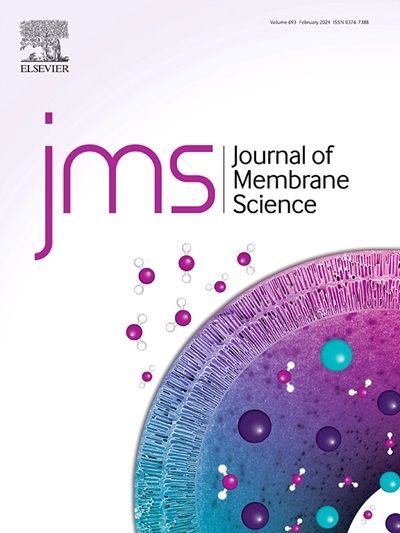Automating the determination of pore size distribution in liquid separation membranes via solute retention experiments
IF 8.4
1区 工程技术
Q1 ENGINEERING, CHEMICAL
引用次数: 0
Abstract
Membranes used for molecular separation in liquid media require precise determination of their pore size distribution (PSD). Analytical methods, such as scanning electron microscopy and atomic force microscopy, are limited to surface pore-size measurements and encounter problems in characterizing membranes with complex anisotropic morphologies. Meanwhile, theoretical calculations for PSD determination involve intricate analyses that depend on solute and solvent properties as well as various mathematical models. To address these challenges, we developed PoreInsight, an open-source Python package that automates PSD determination via solute retention experiments. While PSD determination via solute retention is primarily applicable to pure size-exclusion membranes, including those used in microfiltration and ultrafiltration, it also provides a valuable framework for membranes like those in nanofiltration and reverse osmosis, where size exclusion is not the sole transport mechanism. PoreInsight employs a systematic approach that integrates solute and solvent properties to estimate key PSD parameters — mean pore size and standard deviation — by fitting experimental retention data to sigmoid functions or assuming a log-normal probability density function. This automated method enhances the reliability and reproducibility of PSD characterization. The PoreInsight code, documentation, working demo, and examples are available online at www.OSNdatabase.com. We evaluated the accuracy of various mathematical models and analyzed the effects of various parameters, such as the number of retention points, experimental retention errors, variation in solute radii, and molar volume equivalent estimation, on PSD determination. A good approximation of PSD depends on careful focus on experimental conditions, including precise determination of solvated solute radii, accurate retention data measurements, and careful selection of appropriate fitting models.

用于液体介质分子分离的膜需要精确测定其孔径分布(PSD)。扫描电子显微镜和原子力显微镜等分析方法仅限于测量表面孔径,在表征具有复杂各向异性形态的膜时会遇到问题。同时,测定 PSD 的理论计算涉及复杂的分析,取决于溶质和溶剂的特性以及各种数学模型。为了应对这些挑战,我们开发了 PoreInsight,这是一个开源 Python 软件包,可通过溶质截留实验自动测定 PSD。虽然通过溶质截留确定 PSD 主要适用于纯尺寸排阻膜,包括用于微滤和超滤的膜,但它也为纳滤和反渗透等膜提供了有价值的框架,因为尺寸排阻不是唯一的传输机制。PoreInsight 采用一种系统方法,通过将实验截留数据拟合到 sigmoid 函数或假设对数正态概率密度函数,综合溶质和溶剂特性来估算关键 PSD 参数(平均孔径和标准偏差)。这种自动化方法提高了 PSD 表征的可靠性和可重复性。PoreInsight 代码、文档、工作演示和示例可在 www.OSNdatabase.com 上在线获取。我们评估了各种数学模型的准确性,并分析了各种参数(如保留点数量、实验保留误差、溶质半径变化和摩尔体积当量估算)对 PSD 测定的影响。PSD的良好近似取决于对实验条件的仔细关注,包括溶解溶质半径的精确测定、保留数据的准确测量以及适当拟合模型的仔细选择。
本文章由计算机程序翻译,如有差异,请以英文原文为准。
求助全文
约1分钟内获得全文
求助全文
来源期刊

Journal of Membrane Science
工程技术-高分子科学
CiteScore
17.10
自引率
17.90%
发文量
1031
审稿时长
2.5 months
期刊介绍:
The Journal of Membrane Science is a publication that focuses on membrane systems and is aimed at academic and industrial chemists, chemical engineers, materials scientists, and membranologists. It publishes original research and reviews on various aspects of membrane transport, membrane formation/structure, fouling, module/process design, and processes/applications. The journal primarily focuses on the structure, function, and performance of non-biological membranes but also includes papers that relate to biological membranes. The Journal of Membrane Science publishes Full Text Papers, State-of-the-Art Reviews, Letters to the Editor, and Perspectives.
 求助内容:
求助内容: 应助结果提醒方式:
应助结果提醒方式:


